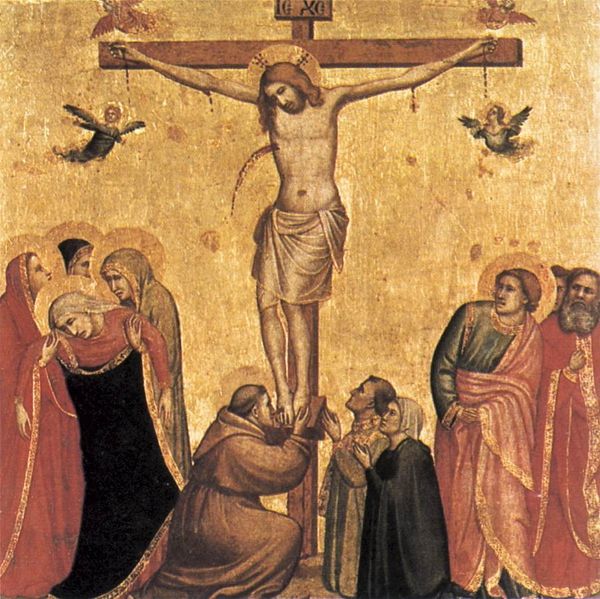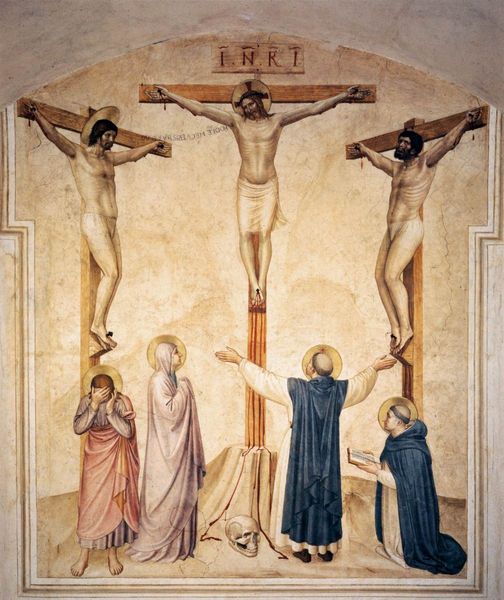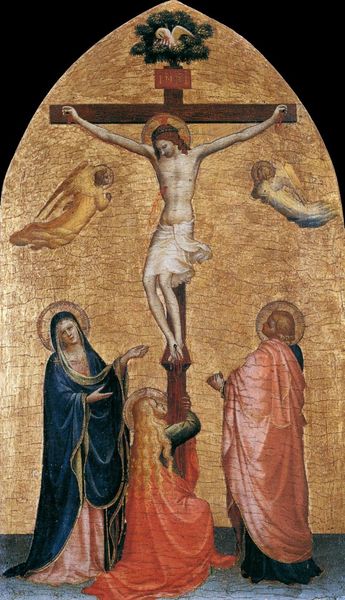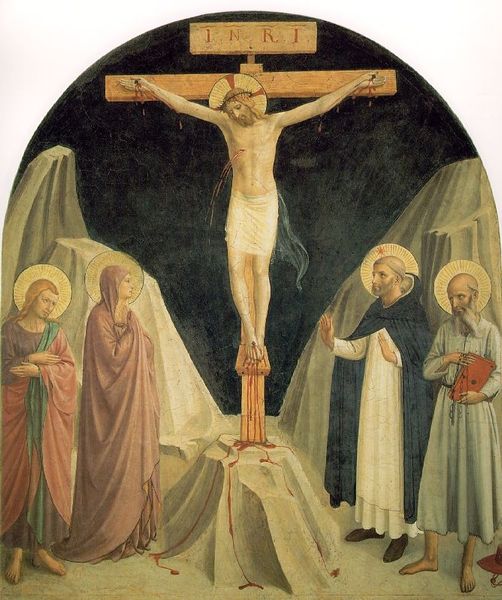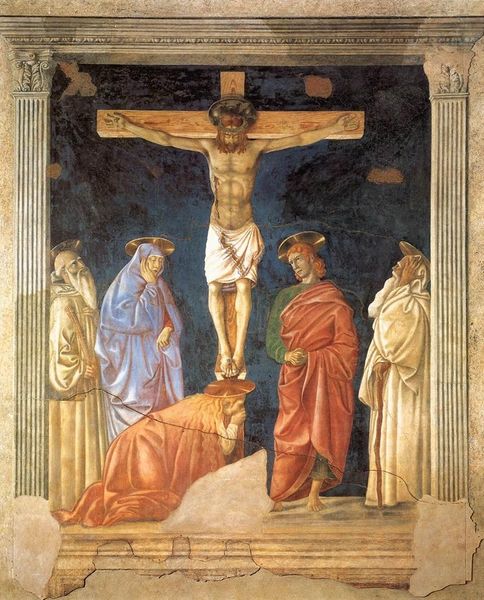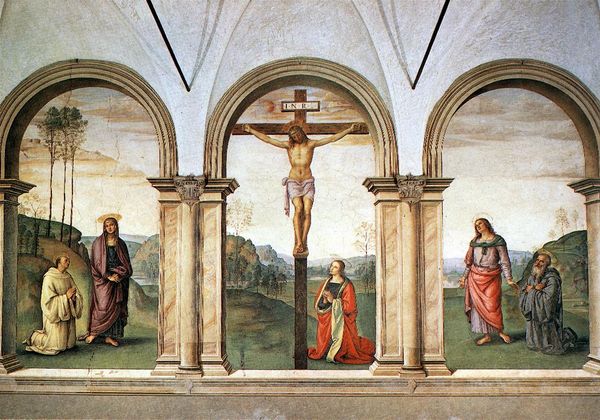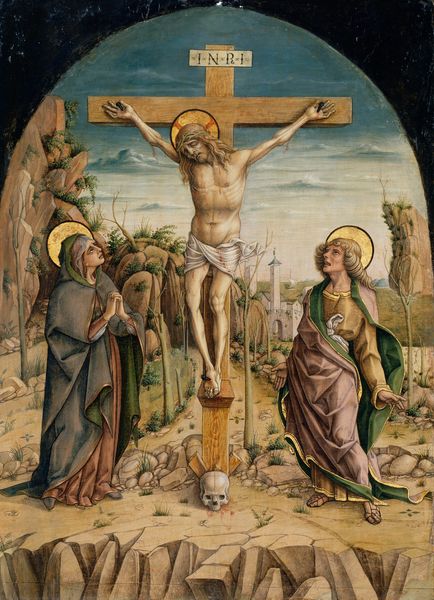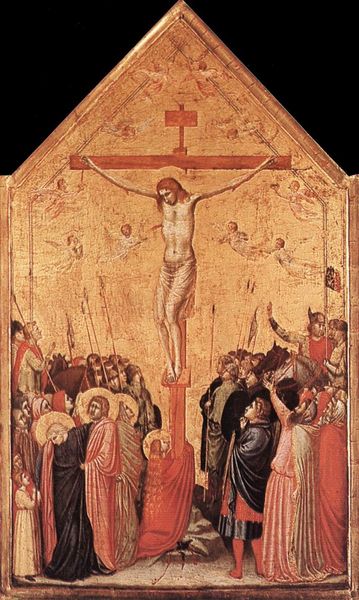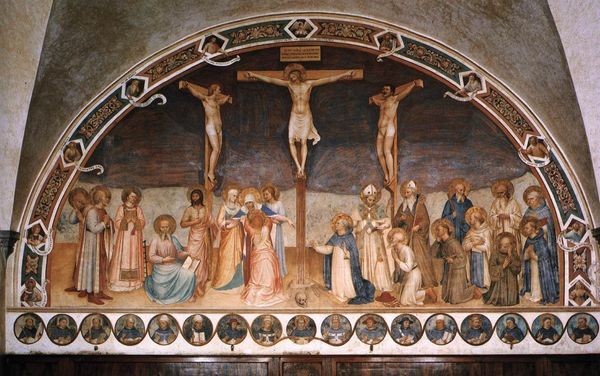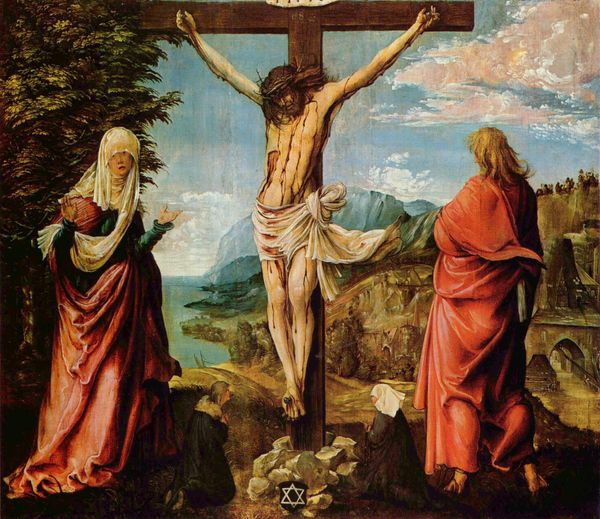
painting, fresco
#
portrait
#
narrative-art
#
painting
#
figuration
#
fresco
#
oil painting
#
cross
#
christianity
#
crucifixion
#
history-painting
#
italian-renaissance
#
virgin-mary
#
christ
Dimensions: 270 x 347 cm
Copyright: Public domain
Curator: Let's consider Andrea del Castagno's "Crucifixion," a fresco executed around 1455. What's your initial reaction to it? Editor: Stark. Bleak, even. The limited palette and the rigid figures create an atmosphere of profound sorrow, wouldn't you say? There's something very deliberate about the restrained emotion. Curator: Deliberate indeed. Remember that fresco painting demanded careful planning and skillful execution. The artist worked directly on the wet plaster, a labor-intensive and time-sensitive process. Pigments were ground, mixed with water, and applied quickly before the plaster dried. The entire setup of the scaffolding and the community that helped realize this vision shaped its impact. Editor: And look at the visual language he employs. The skull at the base of the cross, a potent symbol of mortality, grounding the scene. The Virgin Mary in her iconic blue, embodying grief. He’s pulling from centuries of established symbolism to evoke an immediate emotional response. Curator: Exactly. And in his placement of the figures. They flank the cross, almost like architectural supports themselves. Each figure, from the sorrowful Virgin to the observing saints, contributes to the overall structure and stability of the composition, consider the material support the walls provide. Editor: There's a powerful tension here. He's using familiar imagery but doing so in a way that feels almost…austere. He’s both reinforcing tradition and innovating, relying on our ingrained understanding of the iconography while exploring the possibilities of expression. Curator: It also brings into question its use. Frescoes are inherently site-specific; this piece existed within a defined architectural and social space. Think about the skilled artisans required for its production – the plasterers, pigment makers, and assistants all contributed their labor to this monumental piece. Its context dictated so much of the piece’s intention and function. Editor: And it continues to resonate, even removed from its original context. We still respond to the crucifixion as a central symbol of sacrifice and redemption. Castagno harnessed the enduring power of those archetypes to communicate across time. Curator: By examining the means of its construction, we gain greater respect for both artist, patron and community in this artwork. Editor: I concur, viewing those loaded emblems offers a renewed perspective on timeless concepts like life, passing and love.
Comments
No comments
Be the first to comment and join the conversation on the ultimate creative platform.
